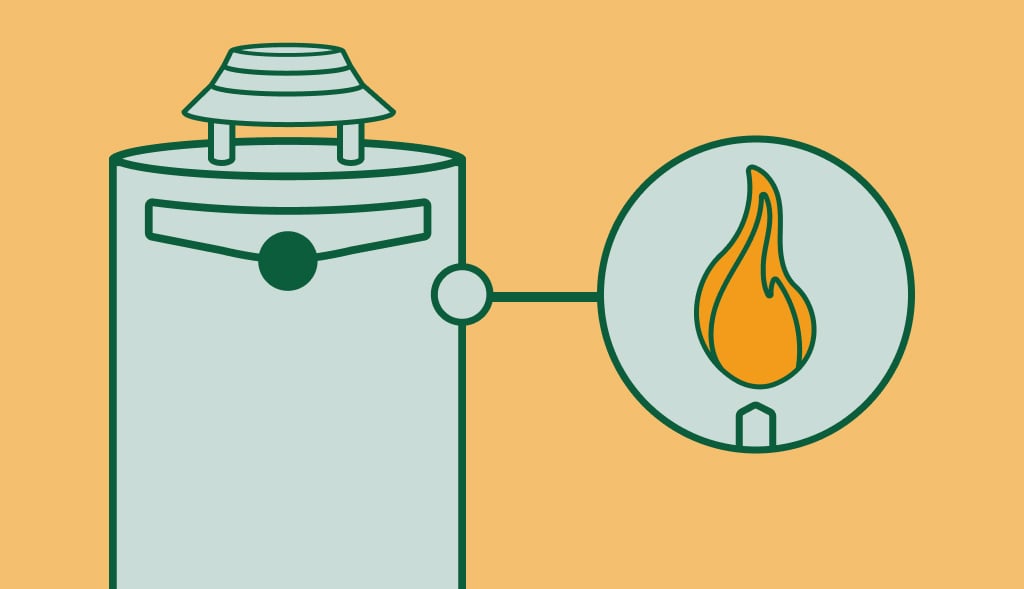The Importance of a Water Heater Pilot Light & Troubleshooting Tips

In the world of gas water heaters, few components are as vital and as underrated as the water heater pilot light. This small flame serves as a critical ignition source for the gas burner. If it goes out, your water heater simply stops producing hot water. This article explores the role of a pilot light water heater, common problems, and steps to reignite it.
What is a Water Heater Pilot Light?
It is a small gas flame that stays lit constantly – also known as a standing pilot. It’s purpose is to ignite the larger burner within your water heater whenever heat is required. This small flame is fueled by a small gas line that is connected to the control valve. The control valve regulates the gas supply to both the pilot light and the main burner.
Common Pilot Light Problems
Even though they are relatively simple devices, a few common problems can arise. Let’s explore some of these issues:
Pilot Light Won’t Stay Lit
One of the most common issues with those lights is that they can go out. In some instances, they won’t stay lit, even when you try to relight them. A possible reason could be a faulty control valve not allowing gas to flow to it. Another reason could be a dirty or bent thermocouple not sensing the pilot light’s heat and shutting off the gas supply.
Weak Flame or Incorrect Flame Color
The flame of your water heater pilot should be blue with a hint of yellow at the tip. It should be strong enough to fully encompass the thermocouple. If the flame is weak or show other color, it might indicate that there is an issue with the gas supply.
How to Relight a Water Heater Pilot Light
Here’s a step-by-step guide on how to reignite this device:
1. Safety First – Shut Off the Gas
Before beginning, shut off the gas at the control valve by turning the knob to the ‘off’ position. Wait for a few minutes to let any residual gas disperse before proceeding. It might be a hot surface.
2. Locate the Pilot Light and Control Valve
Next, remove the access panel to locate the pilot light and the control valve. Typically, these are grouped together near the base of the water heater.
3. Ignite the Pilot Light
After confirming that no gas smell is present, turn the control valve knob to ‘pilot’. Press and hold the igniter button, which should create a spark at the pilot light location. You should see the pilot light ignite.
If your heater doesn’t have an igniter button, you might need to use:
- a long match
- lighter to manually ignite the gas
4. Continuing to Hold
Once the pilot light is lit, continue to hold down the igniter button for about a minute. You may also use the control valve knob. This allows the thermocouple to heat up, signaling the control valve to keep gas flowing to the pilot light.
5. Release and Confirm
After a minute, slowly release the igniter button or control valve knob. The pilot light should stay lit. If it does, turn the control valve knob to the ‘on’ position, and the main burner should ignite.
Troubleshooting
If the pilot light won’t stay lit after several attempts, it’s time to call a licensed plumber. Also, if the flame looks weak or the wrong color, call a licensed plumber. You might have a bad thermocouple or a problem with your gas supply that needs to be addressed.
or if the flame looks weak or the wrong color
How to clean a thermocouple on a water heater?
Before cleaning the thermocouple, make sure that you cut off the power supply. This measure is important so not to injure yourself cleaning the thermocouple.
Now, the thermocouple end may be corroded. This can prevent power from reaching the pilot lights. Rub the ends of this piece with emery paper.
How to test a thermocouple?
Turn your multimeter up to millivolts to perform an open circuit test. Place one of the multimeter’s test leads on the side of the thermocouple and the other on the end that goes into the gas valve. Light a lighter or other heat source with a flame, at the opposite end of the thermocouple.
Conclusion
A water heater pilot light plays a vital role in your gas water heater’s functionality. Knowing how to troubleshoot can save you a lot of time and money.
Remember, safety first. If you’re not confident about relighting the pilot light, call in a professional plumber or your gas company’s service department.
Most service providers charge a standard fee per visit which usually covers the cost of relighting a gas water heater.
DISCLAIMER: The information provided is for general DIY guidance on water heater maintenance and does not replace professional advice or service. Risks include electric shocks, burns, and property damage. Prioritize safety, follow manufacturer’s guidelines, and consult with professionals if unsure. Comply with local laws and obtain necessary permits. Use this information at your own risk; the provider assumes no liability for any injuries or damages. If in doubt, hire a professional.
Blog
Protect Your Rheem Water Heater: How to Replace Your Anode Rod
Rheem water heaters are a trusted name in home comfort. However, like all appliances, proper maintenance is key to longevity. One critical component is the […]
A.O. Smith* Water Heater Anode Rod: Location and Replacement Guide
The anode rod protects your A.O. Smith water heater from corrosion. Typically found on top under a plastic cap, it can be removed with a […]

